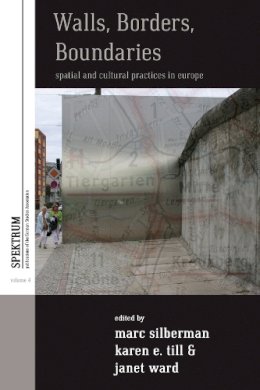Marc Silberman is Professor of German and Affiliate Professor in Theatre and Drama as well as Film Studies at the University of Wisconsin, Madison. He has published extensively on twentieth and twenty-first century German literature, film, and theater.
“The diverse contributions to this book are all thoughtful, well-researched, and significant. The editors have organized them into appropriate sections and provided them with bibliographies, a useful Index, and a cogent and informative contextual Introduction. The collection is both diverse and unified, and the essays are both specific and general, and of contemporary, historical, and timeless import.” • Pol Int “…a highly welcome and useful addition to… scholarship [that] brings together scholars from several academic fields, including history, geography, anthropology, and Germanistik, in a fruitful effort to promote interdisciplinary dialogue and cooperation… The book’s thoughtful and valuable contributions reach far beyond Berlin alone. Indeed, the multiplicity of approaches and perspectives in many ways enriches the book. The study deserves to reach a wide readership among scholars of a number of disciplines, and it is to be hoped that it will inspire further study of the themes and issues addressed here.” • German Studies Review “The individual contributions are almost invariably of a high standard and will be of interest not only to researchers but also to students in a range of fields, including contemporary German history, European Studies, political geography, and border studies. The contributions are well written, and the volume as a whole is well edited and includes numerous illuminating images.” • Central European History “…[the] congregation of interdisciplinary accounts helps [to] demystify the fall of the Berlin Wall, and to destabilise the romanticisation of ‘post-wall’ eras. In a timely way the contributions also highlight the diversity of barriers and boundaries which anchor collective life in a world that sometimes claims for itself a kind of borderless universality. However the collection is at its sharpest when the autonomies of art, of the body, and of the material world are allowed to speak as loudly as persisting cultural and architectural divisions.” • Society and Space–Environment and Planning D “This volume is recommended to all scholars who are interested in walls, boundaries and migrations. It opens up important and new perspectives for research and is also very useful thank to the bibliography, the names, place and subject indexes.” • H-Soz-u-Kult “[A] revealing reflection and interpretation upon the development of post-World War II Europe. It offers a vision of imposed borders and boundaries that have become familiar yet remain disturbing; such a dichotomy is explored in various ways in the essays to make a provocative and fascinating book. The book is especially strong in the combination of the empirical and theoretical, treating borders and boundaries at many different levels from the purely physical to the social, cultural and political, as well as the symbolic. [It is]...a very welcome addition to the field.” • Wendy Pullan, University of Cambridge “The volume is interdisciplinary and broadly conceptualized yet it focuses on some key aspects that give the volume sufficient focus and depth. The quality of the contributions (including the substantive introduction) is consistently high…[and] not merely a collection of pieces from various disciplines; instead many contributions speak to one another across individual disciplines, e.g., in a consideration of the ambivalent or contradictory effects of walls and boundaries—culturally, historically, and socially.” • Friederike Eigler, Georgetown University

